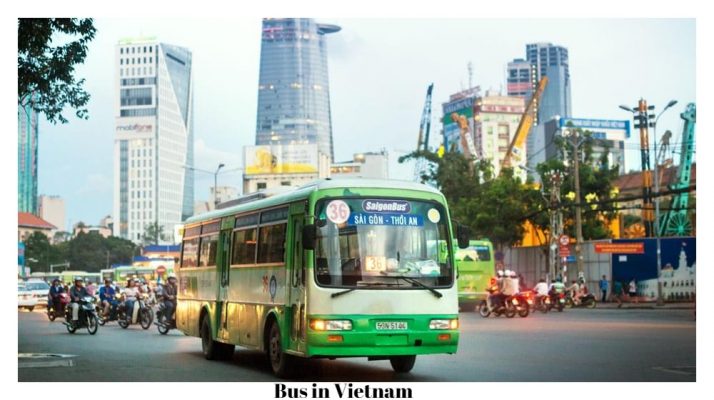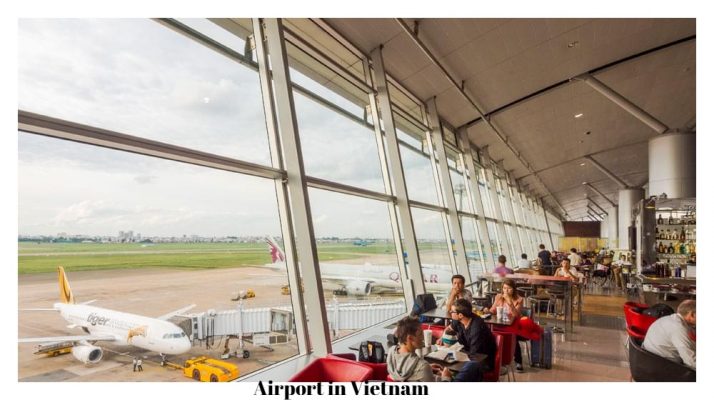1.Taxi:
Likely the most convenient and hassle-free way of getting to your accommodations is to book a hotel which offers a pickup service. With this perk, you won’t have to search for a taxi and your driver will already know where to take you.
If your hotel does not offer this amenity, your next option is to find a ride at the taxi stand. Though you are tired from the flight, be careful about whom you accept a ride from. The first offer may not be the best, and you could wind up getting ripped off.
The cost of a taxi ride to your hotel should cost 150,000 – 170,000 VND ($6.44-$7.30 USD). Expect to pay a standard airport fee on top of your cab fare.
If your taxi driver provided great service, giving around a 23,000 VND ($1 USD) tip is appropriate. If you find yourself too tired to calculate the tip, round up your fare and have the driver keep the change. Bear in mind that tipping drivers is not expected.
Another option for getting to your hotel is to use a rideshare app like Grab. Grab is the Uber of Vietnam. Uber service recently ceased in Vietnamese cities. Also, keep in mind, you may be used to a car picking you up with Uber, but in a metropolis like Saigon, you may be picked up on a motorcycle instead

2. Motorcycles
Millions of motorcycles and scooters flood the city streets of Vietnam. You’re likely to see locals loading an extreme amount of cargo onto these vehicles with only two wheels.
Like taxi cabs, motorcycles and scooters are for hire for transportation in Vietnam. The fare for a motorbike ride should be about half the cost of a car ride, around 5000 or 6000 VND (21-26 cents) per kilometer. You’ll want to be sure to agree to the fare before you hop on.
Or blend in with the locals and ride a motorbike yourself with a rental! Rental costs range around 16,000-47,000 VND ($7-$20 USD) plus the cost of fuel.
Again, use your judgment when doing business with a taxi or a rental business to avoid scams.

3. Bus
_ Public Bus Transit
If you want to check out something a little farther than walking distance, you may opt to take the bus as public transport in Vietnam, which will cost between 3,000 and 10,000 VND depending on the area.
Carry small bills and confirm the fare amount before you board. Buses can be crowded, so be vigilant for pickpocketing.
Tip: Use a GPS map on your mobile device to keep your bearings as you may not be dropped off close to the place you intended to visit.
_ Private Bus
For travel into the country beyond the city, a private bus is a preferred method of travel for transportation in Vietnam. These buses are more comfortable. They are often air conditioned and provide Wi-Fi. As some trips are overnight, some will even offer sleeping compartments.
For trips overnight, take precautions against theft. Make sure your luggage is locked and perhaps sleep on it as a pillow. Keep your mobile device and other valuables secure upon settling in for the night.

4. Airplane
Perhaps you do want to take that long trip from Hanoi to Ho Chi Minh City and taking the train or the bus will eat too much of your time budget. With over 35 airports in Vietnam, it’s easy to coordinate air travel for domestic flight transportation in Vietnam.
Vietnam Airlines, Jetstar, Viet Jet Air, and VASCO are the domestic carriers. Vietnam Airlines boasts the most coverage. Competition amongst them keeps the fares low, so you may end up paying about the same or less as you would by train or by boat.
Though you would miss on some of the scenery with the altitude of a plane, an adventurous helicopter ride would have you close enough to the ground to see a spectacular panoramic landscape! These services are located in Ha Long, Sapa and Cat Ba. The most expensive so far, this zippy tour starts at about 100,000,000 VND ($420 USD) per person

